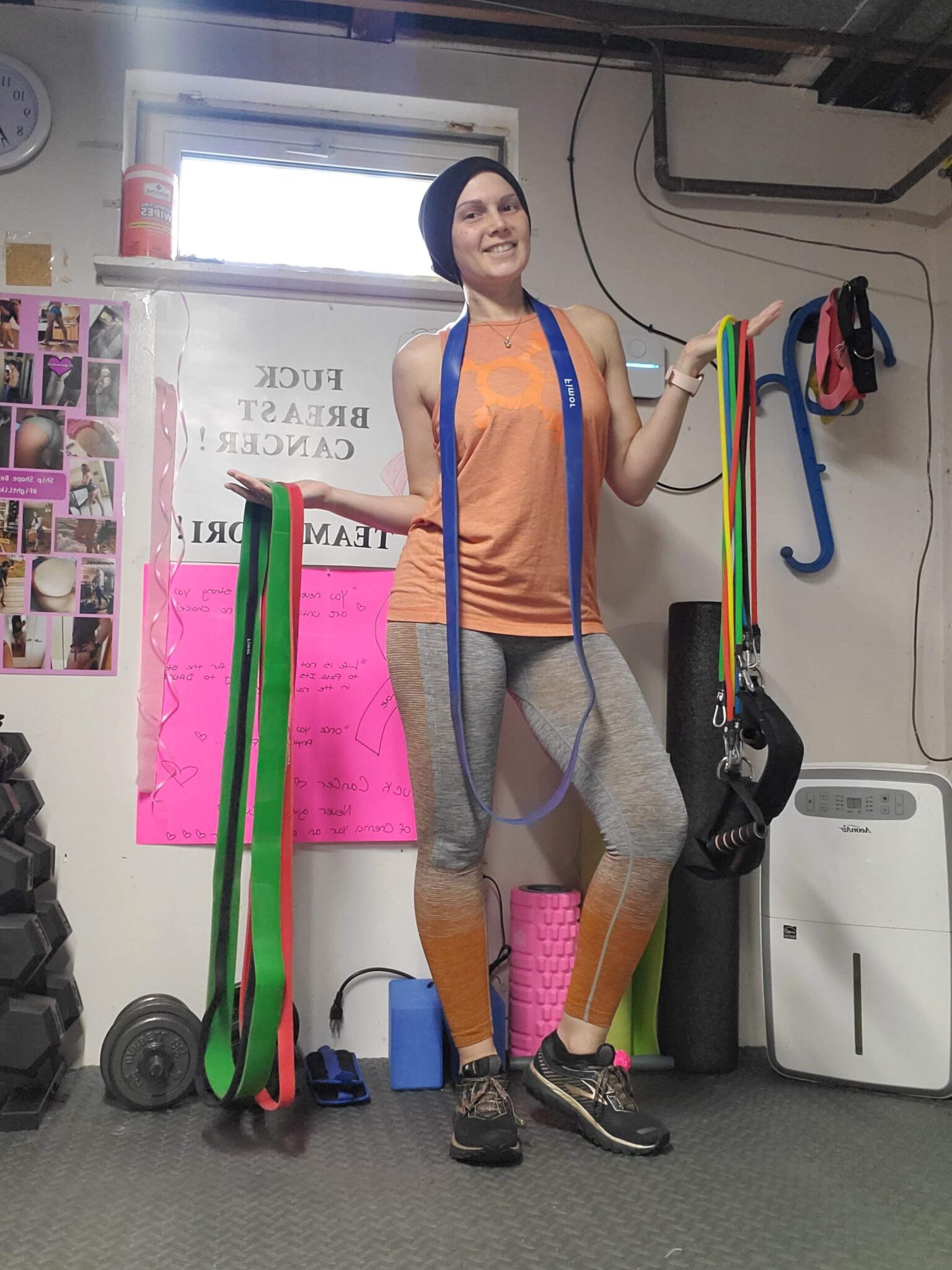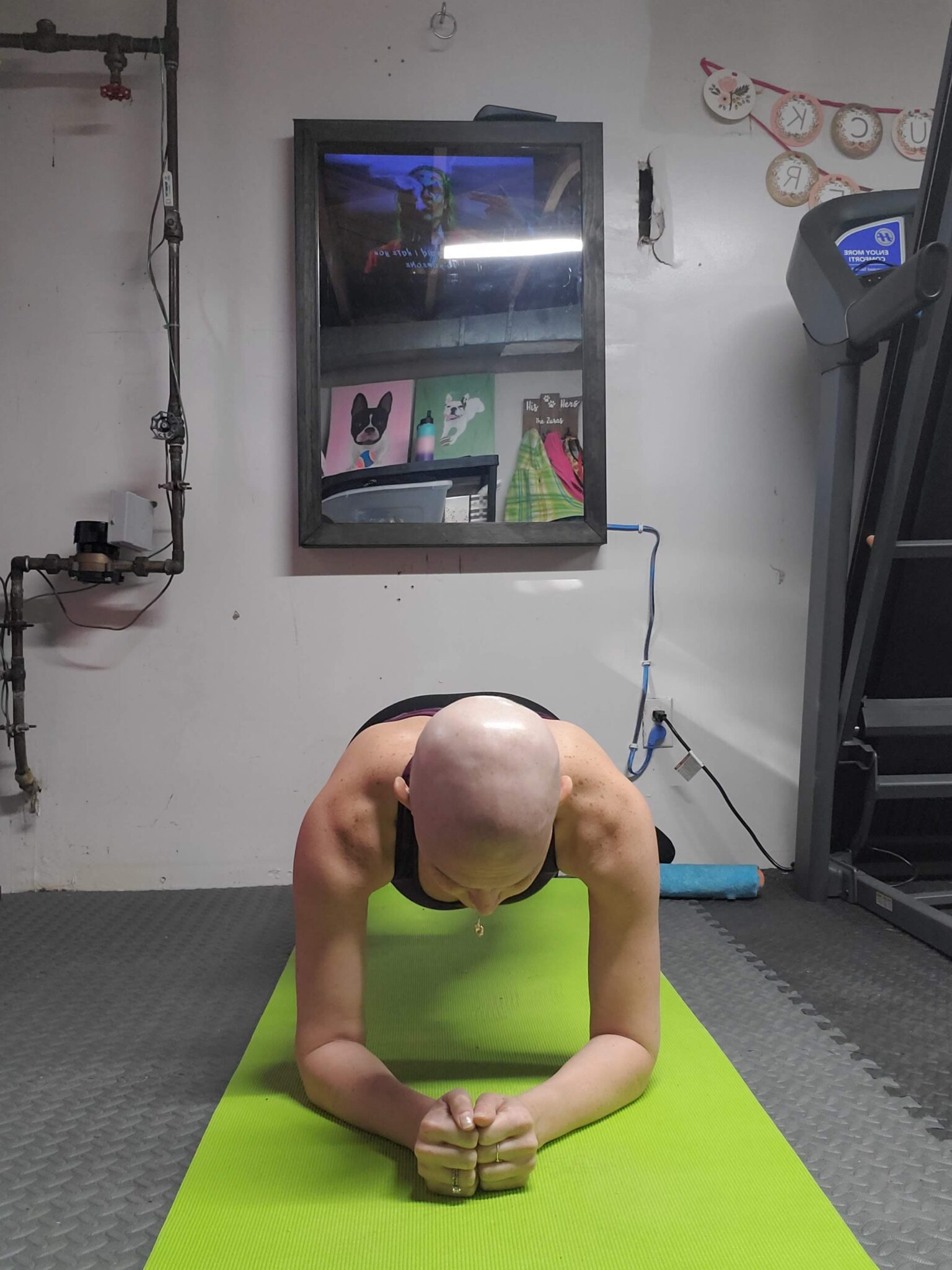does exercise reduce the risk of Breast Cancer?
Exercise has a profound impact on the health of each of us, especially when it comes to reducing the risk of breast cancer.
Not only am I myself a breast cancer survivor, I’m also a dedicated personal trainer specializing in breast cancer oncology. I’ve witness firsthand the transformative power of a tailored fitness program for individuals facing this diagnosis.
While genetics and other biological factors do play a role, emerging research has also illuminated the pivotal role in how lifestyle choices, can impact prevention and survivorship. There’s science behind how exercise acts as a potent shield against breast cancer, and how a specialized training approach can be your ally in this journey.

Understanding the Link: Exercise and Breast Cancer Risk Reduction
The intricate relationship between exercise and your risk of breast cancer is multifaceted; and after living through a breast cancer diagnosis myself, it’s truly awe-inspiring.
Let’s get the super scientific facts out of the way to give you some background into this topic.
Exercise has been clinically shown to help regulate hormone levels, including estrogen, which has been linked to an increased risk of breast cancer. By engaging in regular physical activity, you can help maintain a balanced hormonal environment, reducing the potential for hormone-driven cancers.
Studies are showing that when a person has excess body fat, especially around the waist, it’s been linked to higher estrogen levels .
Getting regular exercise also enhances the function of immune cells by improving the body’s ability to detect and eliminate abnormal cells – including those that may lead to breast cancer development.
Not only is physical activity is a powerful immune booster, it’s also been shown to reduce inflammation in the body. This leads to creating a less hospitable environment for cancer cells to thrive. Chronic inflammation is a known precursor to various diseases, including cancer.
Finally, exercise triggers a process called DNA repair, which is crucial in preventing the formation of mutations that could lead to cancer. This powerful mechanism reinforces the body’s natural defenses against abnormal cell growth.
No two people are the same, not even identical twins when it comes to health and wellness.
Now that we’ve got the formalities out of the way, let’s dive into how this information affects each individual person.
Understanding the unique needs of individuals facing breast cancer is at the core of my practice. The necessity for such individualization creates a dire need for a specialized training approach that combines evidence-based exercise techniques with compassion and sensitivity.
Whether you’re someone who’s at higher risk and looking to take proactive steps, a survivor looking to regain your strength while simultaneously lowering your risk of reoccurrence, or simply seeking to improve your overall health, I’m here to guide you.
Utilizing various all different types of exercise, including cardio training, mobility training, strength training, and flexibility training, can play a crucial role in reducing the risk of a breast cancer diagnosis. By incorporating a combination of different training modalities into your routine, you’re taking proactive steps towards reducing your risk of breast cancer.
There’s so much incredible potential that lies within your body to not only survive but thrive and physical activity is one of those keys to unlock that power.


Mobility Training: Freeing Your Body and Mind
This is honestly my favorite kind of training and that’s not why we’re going over this type of training first. Think about how training is conducted – our bodies must be able to move to work right?
Mobility and flexibility are often thought of synonymous, but they’re quite different.
It’s related, but not synonymous with, flexibility. Mobility refers to the range of motion of your joints whereas flexibility refers to the ability to lengthen or hold a muscle in a stretch. Working on both can lead to some of the same benefits and give you the ability to reach your goals quicker!
Maintaining optimal mobility is often overlooked even by fitness professionals, but it plays a crucial role in our overall health and breast cancer prevention.
Exercises that focus on mobility help to improve circulation, reduce inflammation, and enhance lymphatic flow – all of which contribute to a healthy breast environment. They can also alleviate stress and promote mental well-being, which is essential in maintaining a balanced and harmonious lifestyle.
Flexibility Training: Embracing Balance and Harmony
Flexibility training isn’t just about achieving physical wellbeing, but also creating a balanced, harmonious lifestyle. These exercises reduce tension in muscles, improve posture, and increase range of motion, all of which contribute to overall well-being.
Furthermore, flexibility training promotes mindfulness and body awareness, allowing individuals to connect with their physical selves on a deeper level. This mind-body connection can foster resilience and a positive outlook on life.
If you don’t have flexibility or mobility, in time it can get harder to do simple things like just standing up or walking. That’s kind of necessary in life don’t you think?
I like to incorporate both mobility and flexibility exercises into not just mine but my clients routine a few times a week to experience the full benefits.

Cardio Training: Paving the Way to a Healthier Future
Ensuring that you’re engaging in regular cardiovascular exercise, such as brisk walking, jogging, cycling, or swimming, is a cornerstone of a breast cancer prevention plan.
When you incorporate a training plan that includes cardio training you’re helping to maintain a healthy weight and balance hormone levels – both of which are critical in reducing breast cancer risk. It also a natural boost to your body’s immune system, enhancing its ability to fight off potential threat like breast cancer.
According to the World Health Organization, you should try to aim for at least 150 minutes of moderate-intensity aerobic activity per week. This can include things like walking, casual swimming, gardening, cycling, and so much more.
If you’re finding that you can up the ante, try to aim for about 75 minutes of vigorous-intensity exercise each week. You can achieve this from running, jogging, playing sports, jumping rope, and so on.
It’s important to remember that it’s not about pushing yourself to extremes, but rather finding an enjoyable routine that you can stick to consistently. Life’s a marathon not a sprint!
Strength Training: Building Resilience from Within
This is the part where I really relate a Phoenix Rising to. Building and maintaining lean muscle mass through strength training is a powerful ally in breast cancer prevention.
Muscles act as a reservoir for glucose, helping regulate insulin levels and reduce the risk of insulin resistance, a condition linked to breast cancer.
When most people think of strength training they automatically think of dumbbells/weights, but things like resistance bands, or bodyweight exercises are all really great ways to engage those muscles.
A recent paper has even found a direct link between muscle contraction and a reduction in breast cancer!
The World Health Organization, recommends that you participate in muscle-strengthening activities at moderate or greater intensity that involve all major muscle groups on 2 or more days a week.



The Personalized Approach: Oncology-Focused Training
As a dedicated breast cancer exercise specialist, my mission is to empower you with the knowledge and tools to reduce your risk of breast cancer through all forms of health and wellness.
Empowering yourself through exercise and lifestyle changes will have not just your body but your mind as well thanking you. When you pair these training modalities with a balanced diet, regular doctor check-ups, and a positive mindset, you’ll be well on your way to a healthier, more vibrant future in no time.
Remember that you’re not alone, there’s all different kinds of ways to seek the help you need to ensuring you’re taking the correct steps in reducing your risk of breast cancer.
Together, we can work towards a world where breast cancer is not just treatable, but preventable.




